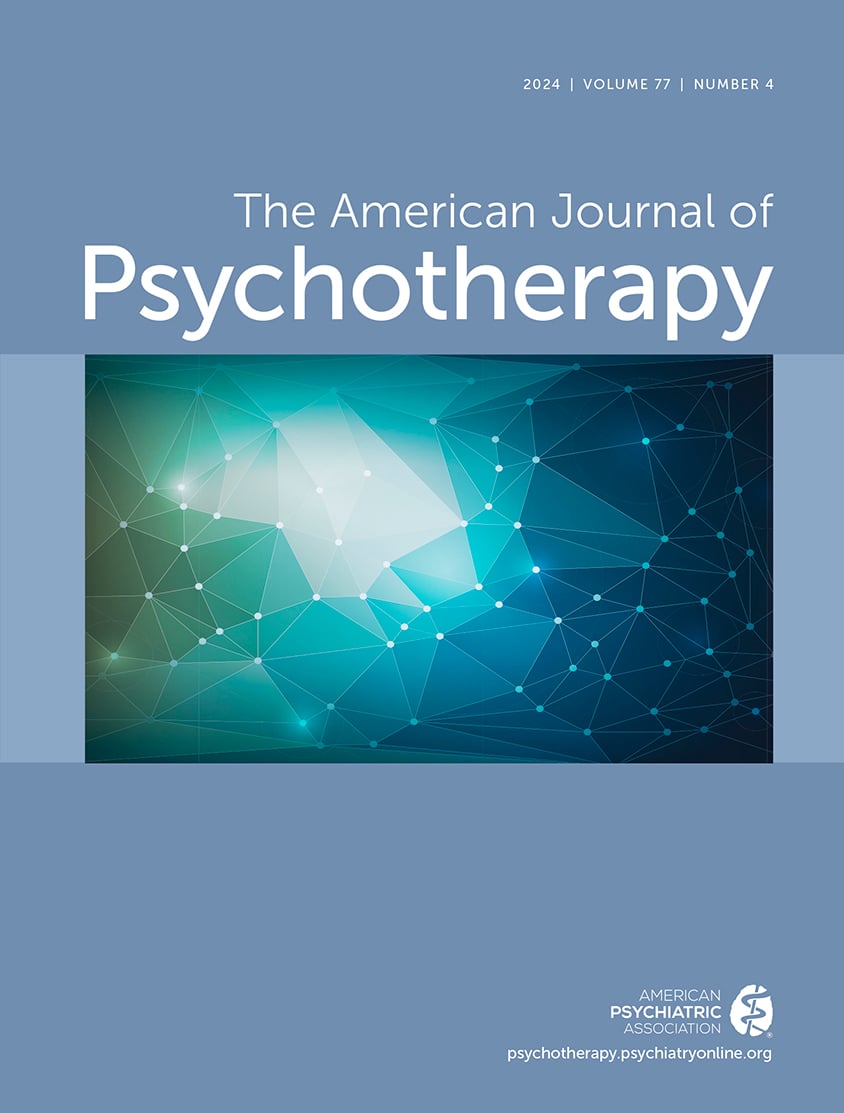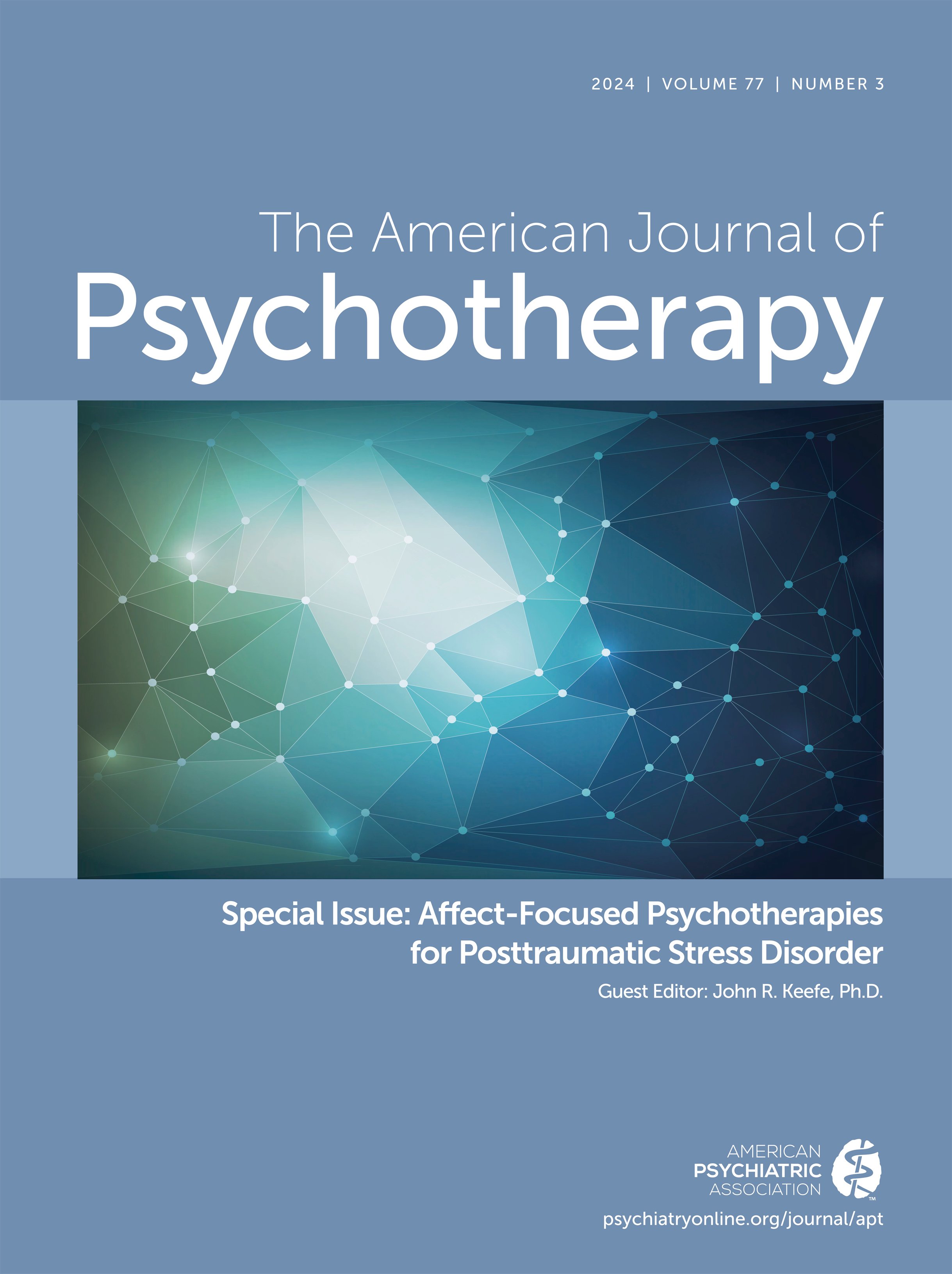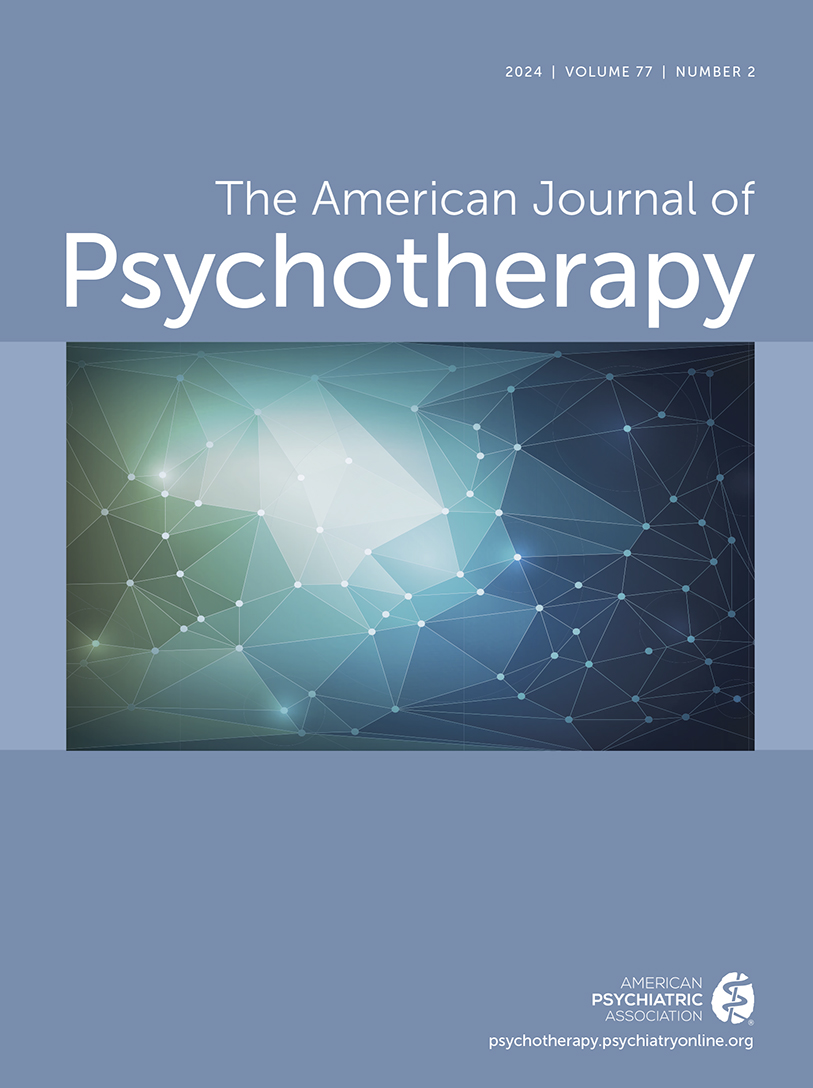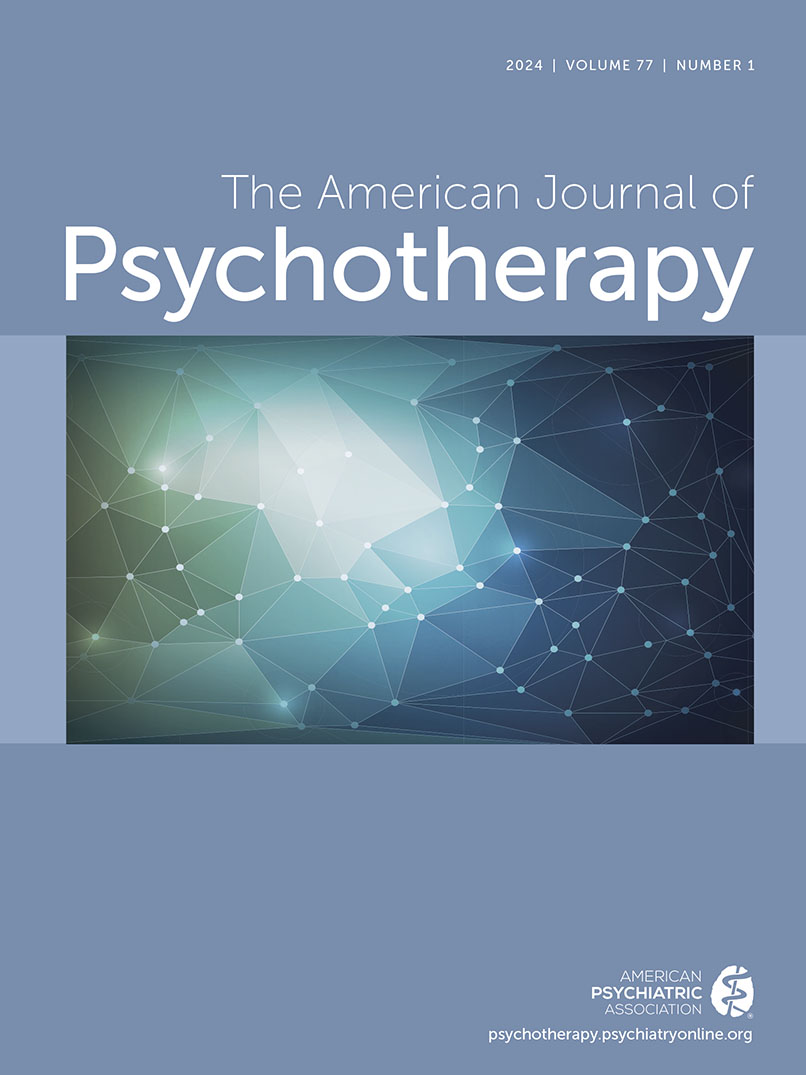American Journal of Psychotherapy
- Volume 43
- Number 4
- October 1989
Editorial
Publication date: 01 October 1989
Pages465–467https://doi.org/10.1176/appi.psychotherapy.1989.43.4.465Articles
Publication date: 01 October 1989
Pages468–479This article studies the motivations of patients for psychiatric consultation. A better understanding of patient-therapist interactions will be helpful in producing an initial psychotherapeutic intervention that, in turn, will lead to an immediate change ...
https://doi.org/10.1176/appi.psychotherapy.1989.43.4.468Publication date: 01 October 1989
Pages480–493A review of the literature shows that presently held views on the relation between hypnosis and conversion disorders had their origin in the previous century. This also holds for therpeutic techniques as they are still applied today. A case report ...
https://doi.org/10.1176/appi.psychotherapy.1989.43.4.480Publication date: 01 October 1989
Pages494–505This paper traces the evolution of the self-psychological view of depression from its roots in classical psychoanalytic theory and technique. Self psychology differs significantly from classical psychoanalysis in its theoretical understanding and its ...
https://doi.org/10.1176/appi.psychotherapy.1989.43.4.494Publication date: 01 October 1989
Pages506–517This paper explores how divorce may affect psychotherapists’ personal and professional lives. It offers theoretical speculations about the effects of divorce and makes recommendations for helping divorcing psychotherapists in their work.
https://doi.org/10.1176/appi.psychotherapy.1989.43.4.506Using Countertransference in the Hypnosis of Trauma Victims: A Model for Turning Hazard into Healing
Publication date: 01 October 1989
Pages518–530The article describes the usefulness of concepts of projective identification and the relational/structure model of countertransference in the treatment of trauma victims. Case examples are presented to illustrate how concordant, complementary, and ...
https://doi.org/10.1176/appi.psychotherapy.1989.43.4.518Publication date: 01 October 1989
Pages531–545While the communication of empathy is thought to be a curative factor in psychotherapy, current conceptualizations usually focus on empathy as only an attitude or state of mind of the therapist. A five-stage model of therapeutic empathic communication is ...
https://doi.org/10.1176/appi.psychotherapy.1989.43.4.531Publication date: 01 October 1989
Pages546–561Freud’s notion of the “death instinct” has been conceived of by many subsequent authors in many ways. One of the misuses of it is as an excuse for passivity in the face of the current crisis in human affairs. This paper reviews the “death instinct” ...
https://doi.org/10.1176/appi.psychotherapy.1989.43.4.546Publication date: 01 October 1989
Pages562–574Nineteen psychiatry residents were compared to 12 community-based alternative healers on the Dissociative Experiences Scale and the Dissociative Disorders Interview Schedule. Neither group showed evidence of extensive psychopathology. However, the ...
https://doi.org/10.1176/appi.psychotherapy.1989.43.4.562Publication date: 01 October 1989
Pages575–587The findings presented here suggest that mercury poisoning from dental amalgam may play a role in the etiology of mental illness. Comparisons between subjects with and without amalgam showed significant differences in subjective reports of mental health. ...
https://doi.org/10.1176/appi.psychotherapy.1989.43.4.575Case Report
Publication date: 01 October 1989
Pages588–597Theories about schizophrenia have viewed stress and anxiety as both predisposing factors and associated features of the disorder. But these theories ignore a possible fundamental interaction: Terrifying psychotic experiences might act as traumatic events ...
https://doi.org/10.1176/appi.psychotherapy.1989.43.4.588Publication date: 01 October 1989
Pages598–607The psychotherapy of a 10-year-old boy is used to demonstrate the usefulness of idealizing and mirroring transferences to help patients move from a state of lack of selfhood and self-differentiation to the development of self-structures that provide ...
https://doi.org/10.1176/appi.psychotherapy.1989.43.4.598Book Review
Publication date: 01 October 1989
Pages609–610https://doi.org/10.1176/appi.psychotherapy.1989.43.4.609aPublication date: 01 October 1989
Pages610–611https://doi.org/10.1176/appi.psychotherapy.1989.43.4.610Publication date: 01 October 1989
Pages611–612https://doi.org/10.1176/appi.psychotherapy.1989.43.4.611Publication date: 01 October 1989
Pages612–613https://doi.org/10.1176/appi.psychotherapy.1989.43.4.612Publication date: 01 October 1989
Pages614–615https://doi.org/10.1176/appi.psychotherapy.1989.43.4.614aPublication date: 01 October 1989
Pages615–616https://doi.org/10.1176/appi.psychotherapy.1989.43.4.615Publication date: 01 October 1989
Pages616–617https://doi.org/10.1176/appi.psychotherapy.1989.43.4.616Publication date: 01 October 1989
Pages617–618https://doi.org/10.1176/appi.psychotherapy.1989.43.4.617Publication date: 01 October 1989
Pages620–621https://doi.org/10.1176/appi.psychotherapy.1989.43.4.620Publication date: 01 October 1989
Pages621–622https://doi.org/10.1176/appi.psychotherapy.1989.43.4.621Publication date: 01 October 1989
Pages622–623https://doi.org/10.1176/appi.psychotherapy.1989.43.4.622Publication date: 01 October 1989
Pages623–624https://doi.org/10.1176/appi.psychotherapy.1989.43.4.623Publication date: 01 October 1989
Pages624–625https://doi.org/10.1176/appi.psychotherapy.1989.43.4.624Publication date: 01 October 1989
Pages625–626https://doi.org/10.1176/appi.psychotherapy.1989.43.4.625Index
Publication date: 01 October 1989
Pages627–632https://doi.org/10.1176/appi.psychotherapy.1989.43.4.627Past Issues
View Issues Archive
Vol. 77 | No. 4

Vol. 77 | No. 3

Vol. 77 | No. 2
